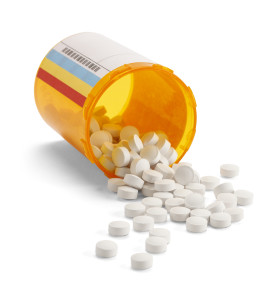Esbriet (pirfenidone) Approved for Idiopathic Pulmonary Fibrosis
Esbriet (pirfenidone) is one of two medications approved by the FDA (Food and Drug Administration) in October of 2014 to treat idiopathic pulmonary fibrosis. It’s mechanism of  action remains somewhat poorly understood. It is described as an antifibrotic agent that acts on multiple pathways that may be involved in scarring of the lung tissue. Simply put, it turns down the process of scar formation in the lungs.
action remains somewhat poorly understood. It is described as an antifibrotic agent that acts on multiple pathways that may be involved in scarring of the lung tissue. Simply put, it turns down the process of scar formation in the lungs.
FDA Approval of Esbriet (pirfenidone)
The FDA approved Esbriet (perfenidone) after reviewing three large clinical trials, ASCEND, CAPACITY I, and CAPACITY II, which were completed over the past decade. The data shows that patients taking Esbriet (perfenindone) had less decline in lung function over time than those patients taking a placebo. The studies specifically compared the forced vital capacities (the amount of air that can be forcibly exhaled from the lungs after taking the deepest breath possible) of patients on medication versus those on a placebo. FVC (forced vital capacity) is measured via spiromety. Furthermore, when the three studies are viewed together, the medicine improved overall survival.
 How Is Esbriet (pirfenidone) Taken?
How Is Esbriet (pirfenidone) Taken?
Esbriet (pirfenidone) is a capsule that should be taken by mouth with food three times a day. Patients start taking one pill (267mg) three times a day and then a week later they increase to two pills three times a day, and a week later they increase to the final dose of three pills (801mg) three times a day. It is important to follow the prescribed dose escalation. If multiple doses of medication are missed it may be necessary to restart at a lower dose. Make sure to speak with the prescribing physician prior to stopping or restarting Esbriet (pirfenidone).
Possible Side Effects From Esbriet (pirfenidone)
The most common side effects from Esbriet (pirfenidone) are gastrointestinal. Stomach upset was the most common side effect reported during  clinical trials. Other side effects that were reported include diarrhea, headache, dizziness, tired feeling, weight loss, cold symptoms such as stuffy nose, sneezing, sore throat, insomnia and joint pain. The drug makes patients very sensitive to sun exposure. Patients must use SPF 50 sun block, hats and long sleeves if they are in direct sunlight. Failure to take these precautions can lead to an impressive rash in sun-exposed areas. Lastly, patients should have monthly blood tests to monitor their liver function for the first six months then quarterly there after as an elevation in liver enzymes has been documented in some patients taking Esbriet (pirfenidone).
clinical trials. Other side effects that were reported include diarrhea, headache, dizziness, tired feeling, weight loss, cold symptoms such as stuffy nose, sneezing, sore throat, insomnia and joint pain. The drug makes patients very sensitive to sun exposure. Patients must use SPF 50 sun block, hats and long sleeves if they are in direct sunlight. Failure to take these precautions can lead to an impressive rash in sun-exposed areas. Lastly, patients should have monthly blood tests to monitor their liver function for the first six months then quarterly there after as an elevation in liver enzymes has been documented in some patients taking Esbriet (pirfenidone).
How To Get Started on Esbriet (pirfenidone)